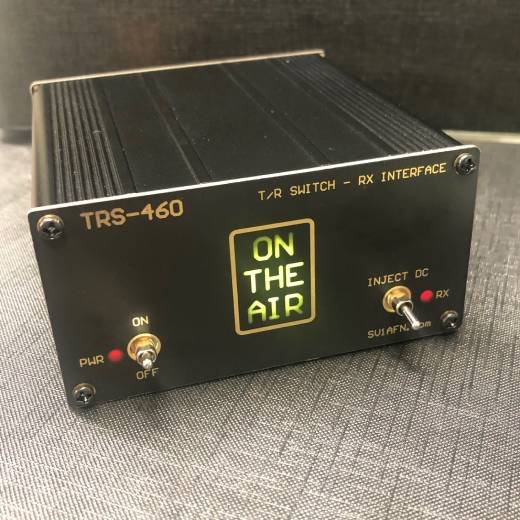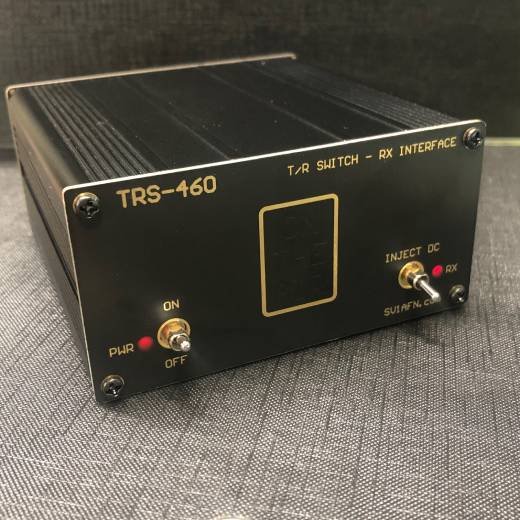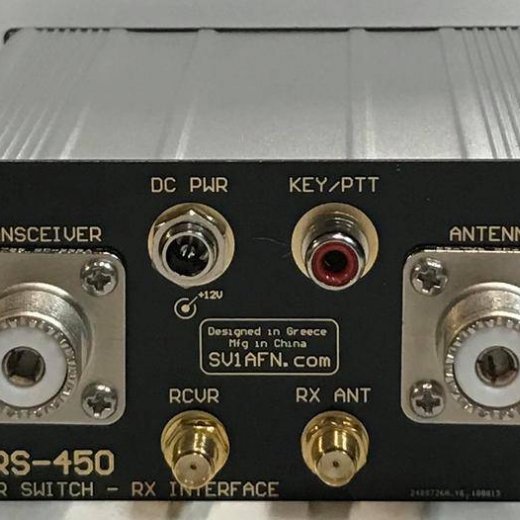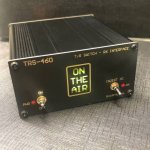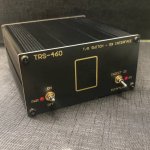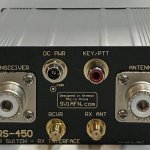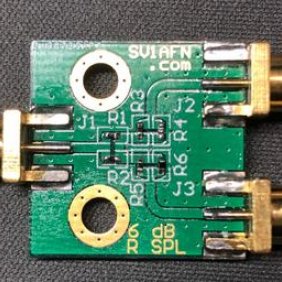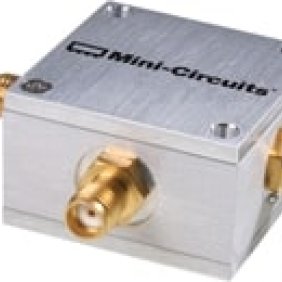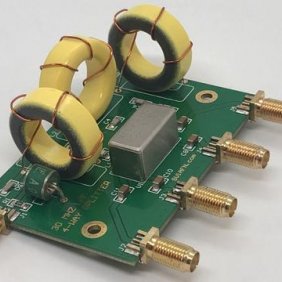TRS-450
Transmit/Receive Switch & Rx Interface - Built & Tested Module Encased in Aluminum Box
-
Insert a preselector, a pre-amp, an attenuator or anything else in the receive path, use different antenna for Rx or Tx, use different radio for Tx or Rx, use an external SDR with your transceiver, etc...
-
TR switch with Relays and PIN-Diode switch protecting the receiver
-
PTT operated with RF sensing
-
Works from DC-150 MHZ
If you ever want to place something like a preselector filter or an LNA ahead of the receiver of our transceiver, you need to open the box, locate the receive path and insert relays and cables and then drill holes on the cabinet for connectors or cables to pass through, ... no good news for those of us with sensitive feelings for our radios! This project inserts a Transmit/Receive (TR) switch between the radio transceiver's antenna port and an external antenna, in series with the coax line. Then, it provides a receive port from the antenna side and a receiver port from the transceiver side. To explain, when the radio transceiver is in transmit mode, it simply connects the transceiver to the antenna just like before through high power relays. But when the radio is in the receive mode, the radio's antenna socket connects to another new connector called "RCVR" and the antenna coax connects to another new connector called "Rx Antenna".
You can now insert anything you want between those two new connectors to be included in the receive path, when receiving. Pre-amps, preselector filters, notch filters, overvoltage protection circuits, limiters, noise generators or whatever needed to be placed on the receive path only, and otherwise would had been damaged from the high power when transmitting. Of course, a short coaxial cable bridge must be placed in the place of future additions, tests etc.
The timing of when exactly this switching will be done, is controlled by the radio's PTT signal (old Press-To-Talk signal from the microphone switch), today is called with many different names, but most radios have this signal available in a panel mounted socket somewhere. It is the same signal used to key an external power amplifier.
By the way, if you use a power amplifier, this signal can be wired to both the TR interface and the power amplifier, but attention: the TR switch should be placed between the radio and the power amplifier and not between the power amplifier and the antenna, because the power handling of the TRS-450 is less than 1500 W at HF and less than 50 W at VHF.
In addition to this capability of adding anything one should need in the receive path only, those two new connectors support more options:
- The same antenna coax coming to our shack can be used to connect to a transmitter when on transmit and to a different receiver when on receive. The transmitter is wired to the "Transceiver" connector and the new receiver is wired to the "Rx Ant" connector. Now, when the transmitter stops transmitting, the external receiver gets the antenna.
- Another option is to use a transceiver with separate antennas for receive and transmit. The transmitting antenna is wired to the "ANTENNA" port and the receiving antenna is wired to the "RCVR" connector. If the receiving antenna or pre-amp needs DC power through the coax, (bias-T), then by placing "Jumper 2" this unit sends 13.8VDC up to 250 mA to the remotely placed pre-amp.
- And if you ever need to have an extra SDR receiver used as a panadaptor, or you need a means to compare receivers at the same time, since you have access to the receive path now, you can include a power splitter and divide the Rx signal into two receivers: to main radio's receiver and to an external SDR or anything else. This power splitter's sum-port should be wired to the "RX Ant" connector and its outputs, one to the external SDR receiver and the other to the "RCVR" connector. This RF Power splitter is not included in this design. It can be bought separately and wired external to this unit.
Using SV1AFN's DX'ers LNA for HF, an external power splitter is not necessary as the DX'ers LNA is equipped with 4 output ports already. In this case, one output can be connected to the "RCVR" connector and another one to the
